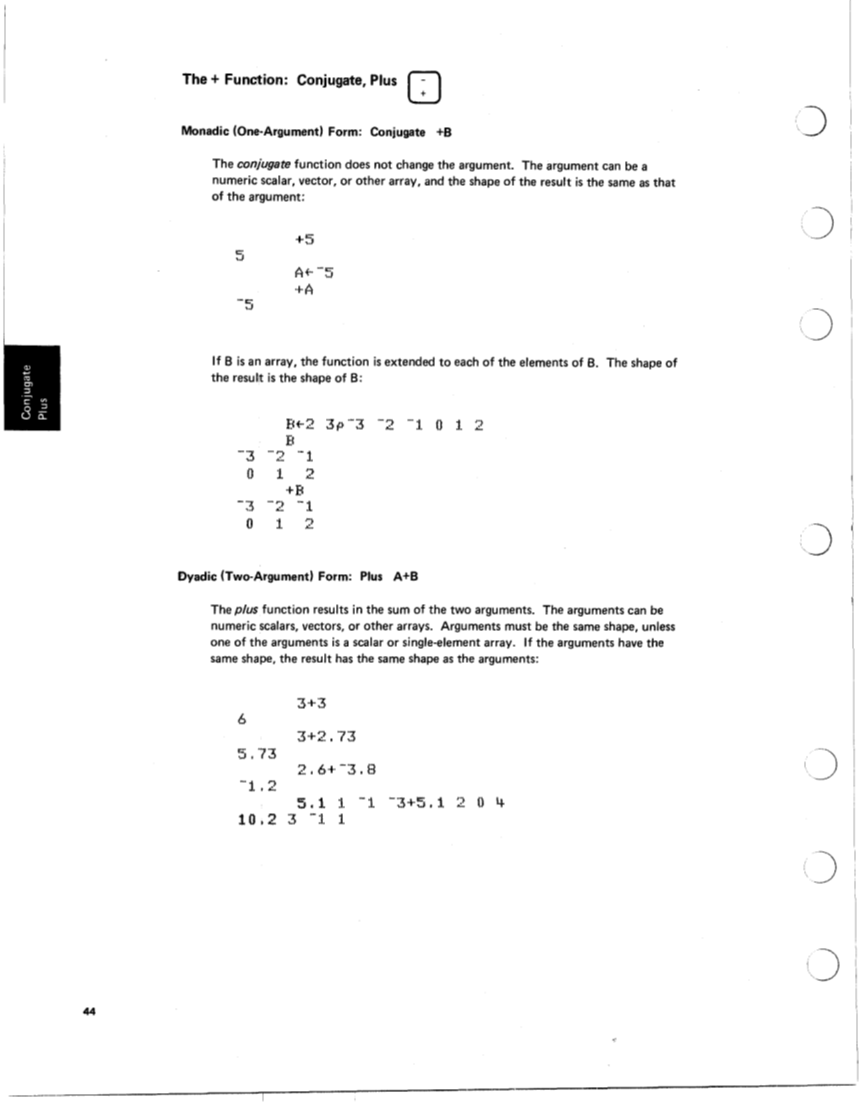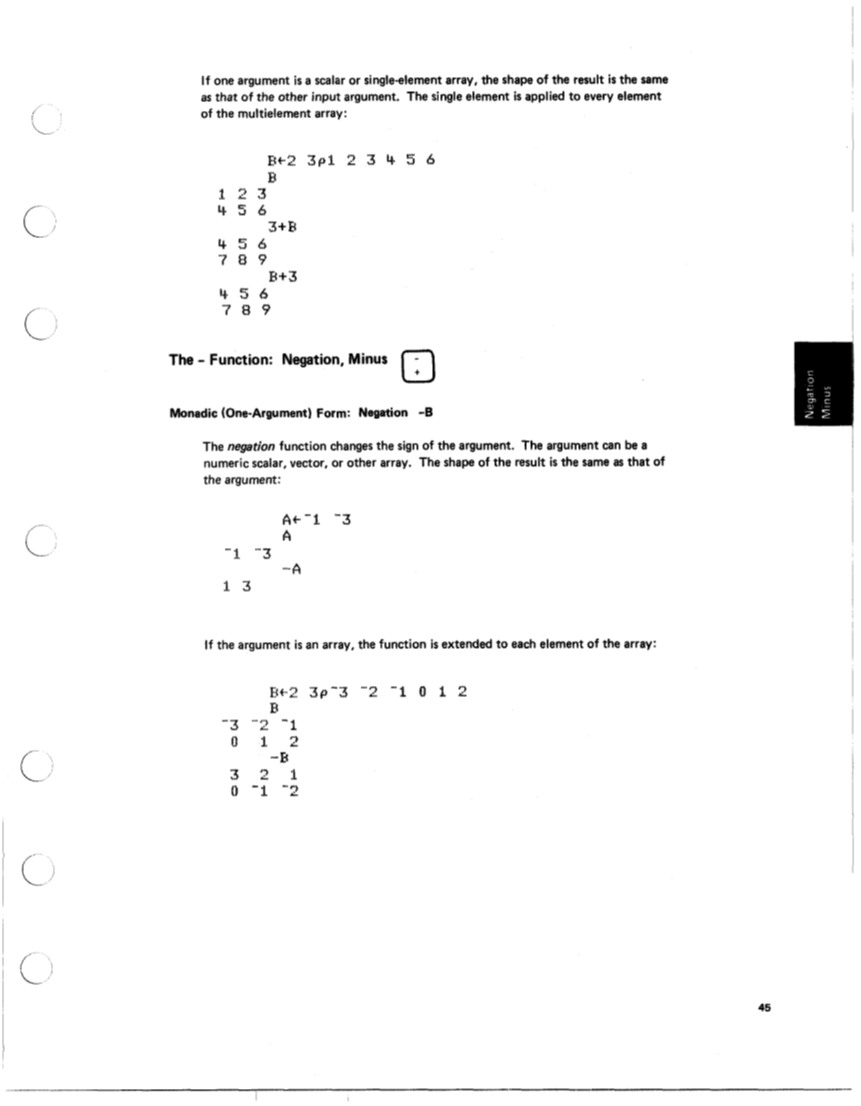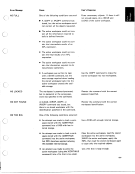44
Ll
The + Function: Conjugate, Plus
Monadic (One-Argument) Form: Conjugate +B
The conjugate function does not change the argument. The argument can be a
numeric scalar, vector, or other array, and the shape of the result is the same as that
of the argument:
If 6 is an array, the function is extended to each of the elements of €3. The shape of
the resullt is the shape of 6:
Bt.. 2 3 p "'3 "'2 ... 1. 0 1. 2
H
I.. ...,
3 2 .- 3.
0 1. 2
.I -2 *- 1
0 :I. 2
+ B
- ..
Dyadic (Two-Argument) Form: Plus A+B
The plus function results in the sum of the two arguments. The arguments can be
numeric scalars, vectors, or other arrays. Arguments must be the same shape, unless
one of the arguments is a scalar or single-element array. If the arguments have the
same shape, the result has the same shape as the arguments:
3 +. 3
3 + 2 I '7 3
2 4 6.t "3 * 13
3 , 1. :I. ." :I. -3+5 , j, 2 0 4
&
rs , '73
*.' 1. # 2
1 a , 2 3 .- :I. 1.
Ll
The + Function: Conjugate, Plus
Monadic (One-Argument) Form: Conjugate +B
The conjugate function does not change the argument. The argument can be a
numeric scalar, vector, or other array, and the shape of the result is the same as that
of the argument:
If 6 is an array, the function is extended to each of the elements of €3. The shape of
the resullt is the shape of 6:
Bt.. 2 3 p "'3 "'2 ... 1. 0 1. 2
H
I.. ...,
3 2 .- 3.
0 1. 2
.I -2 *- 1
0 :I. 2
+ B
- ..
Dyadic (Two-Argument) Form: Plus A+B
The plus function results in the sum of the two arguments. The arguments can be
numeric scalars, vectors, or other arrays. Arguments must be the same shape, unless
one of the arguments is a scalar or single-element array. If the arguments have the
same shape, the result has the same shape as the arguments:
3 +. 3
3 + 2 I '7 3
2 4 6.t "3 * 13
3 , 1. :I. ." :I. -3+5 , j, 2 0 4
&
rs , '73
*.' 1. # 2
1 a , 2 3 .- :I. 1.









































































































































































































































